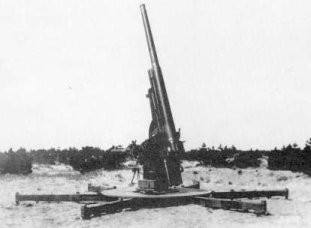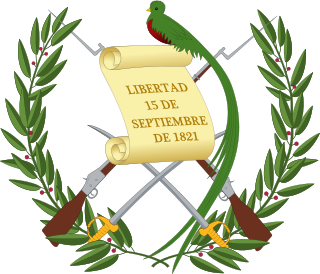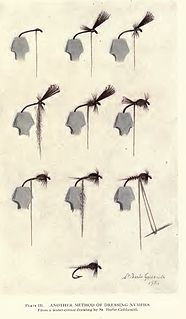The History of the Second World War is the official history of the British contribution to the Second World War and was published by Her Majesty's Stationery Office (HMSO). The immense project was sub-divided into areas to ease publication, United Kingdom Military Series, the United Kingdom Civil Series for the civilian war effort; the Foreign Policy series, the Intelligence series and the Medical series are eponymous. Other volumes not under the aegis of the series but published by HMSO may be read as adjuncts, covering matters not considered in great detail or at all, in one case, in the main series. Further volumes, published after the privatisation of HMSO or in the series about the Special Operations Executive, are also useful.

The Type 4 75 mm AA gun was an anti-aircraft gun developed by the Imperial Japanese Army. They started producing the gun in 1943. The Type 4 number was designated for the year the gun was accepted, 2604 in the Japanese imperial year calendar, or 1944 in the Gregorian calendar. Due to the lack of raw materials available and the great damage by air raids to its industrial infrastructure, only 70 units were made. These units were retained for defense of the Japanese home islands during World War II.

The Type 14 10 cm AA gun was an anti-aircraft gun used by the Imperial Japanese Army after World War I. The Type 14 number was designated for the year the gun was accepted, the 14th year of Emperor Taishō's reign, 1929 in the Gregorian calendar. Only a small number were produced, and it was superseded by the Type 88 75 mm AA gun in production before the start of World War II.

The Type 3 12 cm AA gun was an anti-aircraft gun used in quantity by the Imperial Japanese Army during World War II.The Type 3 number was designated for the year the gun was accepted, 2603 in the Japanese imperial year calendar, or 1943 in the Gregorian calendar. It replaced the earlier Type 88 75 mm AA Gun in Japanese service.

The Type 5 15 cm AA gun was a large caliber anti-aircraft gun developed by the Imperial Japanese Army during the final days of World War II. The Type 5 number was designated for the year the gun was accepted, 2605 in the Japanese imperial year calendar, or 1945 in the Gregorian calendar. It was intended to replace the earlier Type 3 12 cm AA Gun as a defense against American air raids.

The Type 11 37 mm infantry support gun was an infantry support gun used by the Imperial Japanese Army in the Second Sino-Japanese War and World War II. The Type 11 designation was given to this gun as it was accepted in the 11th year of Emperor Taishō's reign (1922).
The United States Army divides supplies into ten numerically identifiable classes of supply army . The North Atlantic Treaty Organisation (NATO) uses only the first five, for which NATO allies have agreed to share a common nomenclature with each other based on a NATO Standardization Agreement (STANAG). A common naming convention is reflective of the necessity for interoperability and mutual logistical support.
The Strategikon or Strategicon is a manual of war regarded as written in late antiquity and generally attributed to the Byzantine Emperor Maurice.

This is a list of the counts, dukes, grand dukes, and prime ministers of Oldenburg.

The Insolvency Act 1986 is an Act of the Parliament of the United Kingdom that provides the legal platform for all matters relating to personal and corporate insolvency in the UK.

The Korean People's Army Ground Force(KPAGF; Korean: 조선인민군 륙군; Hanja: 朝鮮人民軍 陸軍; lit. Korean People's Military Land Group) is the main branch of the Korean People's Army, responsible for land-based military operations.
The word mark, followed by number, is a method of designating a version of a product. The kind of products that use this convention vary widely in complexity. The concept shares some similarities with the "type designation", the 1.0+ software versioning convention often used to designate general software product releases, and other version control schemas. It is often abbreviated as Mk or M. Because a mark is often made to measure height or progress, by metonymy the word mark is used to note a defined level of development; thus designations like "Mark I", "Mark II", "Mark III", "Mark IV", etc. come to be used as proper names. However, since the same name is used for a wide variety of products, it can have varied connotations for different persons.
The Adams Chronicles is a thirteen-episode miniseries by PBS that aired in 1976 to commemorate the American Bicentennial.

The Constitution of Guatemala is the supreme law of the Republic of Guatemala. It sets the bases for the organization of Guatemalan government and it outlines the three main branches of Guatemalan government: executive branch, legislative branch, and judicial branch.

The Way of a Trout with a Fly and Some Further Studies in Minor Tactics is a fly fishing book written by G. E. M. Skues published in London in 1921. This was Skues's second book after Minor Tactics of the Chalk Stream (1910).

The Tactica is a military treatise written by or on behalf of Byzantine Emperor Leo VI the Wise in c. 895–908 and later edited by his son, Constantine VII. Drawing on earlier authors such as Aelian, Onasander and the Strategikon of emperor Maurice, it is one of the major works on Byzantine military tactics, written on the eve of Byzantium's "age of reconquest". The original Greek title is τῶν ἐν πολέμοις τακτικῶν σύντομος παράδοσις. The Tactica elaborates on a wide variety of issues, such as infantry and cavalry formations, drills, siege and naval warfare etc. It is written in a legislative form of language and comprises 20 Constitutions and an Epilogue and is concluded by 12 additional chapters, the latter mainly focusing on ancient tactics.

The Moldovan Constitution of 1994 is the supreme law of the country, since 27 August 1994.












